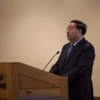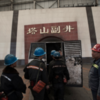Reconciling Air Quality, Climate, and Economic Goals
中国国家电网公司前董事长刘振亚就全球能源互联网在哈佛大学发表公开演讲
同解振华特别代表和李干杰部长进行高层次会晤
《纽约时报》与VICE新闻援引Nielsen总监关于中国二氧化硫和空气污染防控的观点
《财富》杂志刊登何博士和Nielsen总监有关中国空气污染困境的专栏文章
《华尔街日报》、《哈佛志》、《气候发展》和《南华早报》报道哈佛大学中国项目关于空气污染和碳税的研究
Jorgenson教授关于中美两国碳税的研究
Nielsen总监在《环境与健康展望》期刊表示中国细颗粒物(PM2.5)变化趋势令人鼓舞
《纽约时报》周日专栏:净化中国的空气
《经济学人》、《中国日报》报道哈佛大学中国项目的研究;《纽约时报》就同一主题刊登专栏文章
2008
Mar
28
2008
Mar
25
. 2009. “Compensating wage differentials with unemployment: Evidence from China.” Environmental and Resource Economics, 42, 2, Pp. 187-209. Publisher's VersionAbstract
This study developed a new approach to the valuation of health risk in China, for monetizing health damages of environmental degradation.
. 2012. “An integrated assessment of the economic costs and environmental benefits of pollution and climate control.” In The Chinese Economy: A New Transition, . London: Palgrave Macmillan. Publisher's Version
. 2009. “The local and global benefits of green tax policies in China.” Review of Environmental Economics and Policy, 3, 2, Pp. 231-250. Publisher's VersionAbstract










